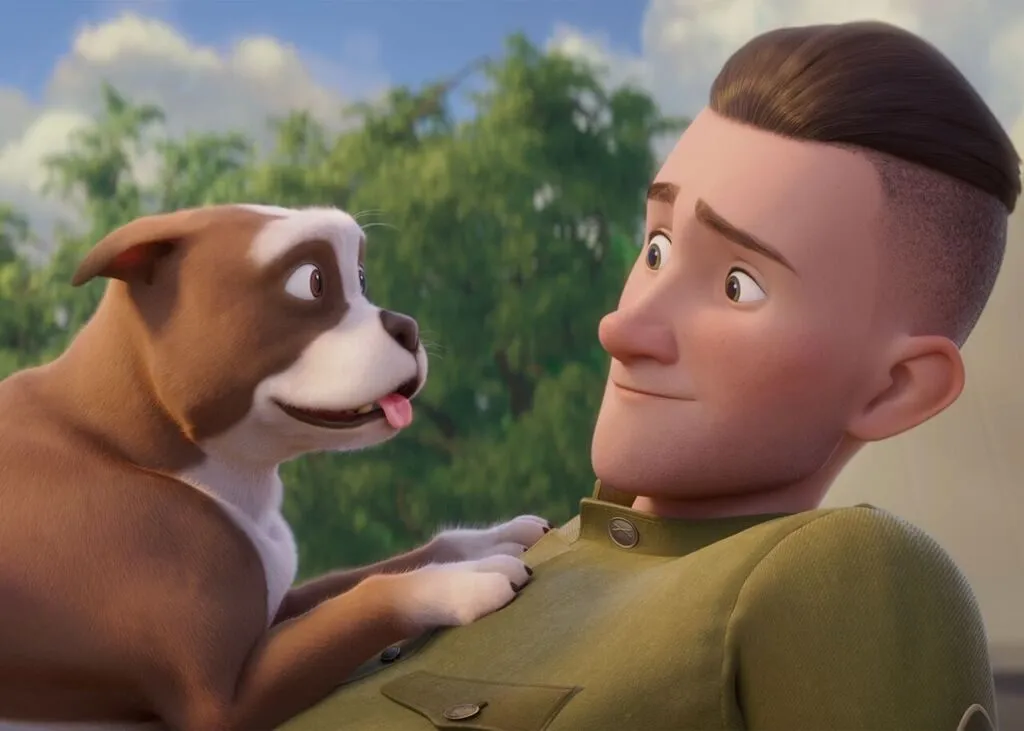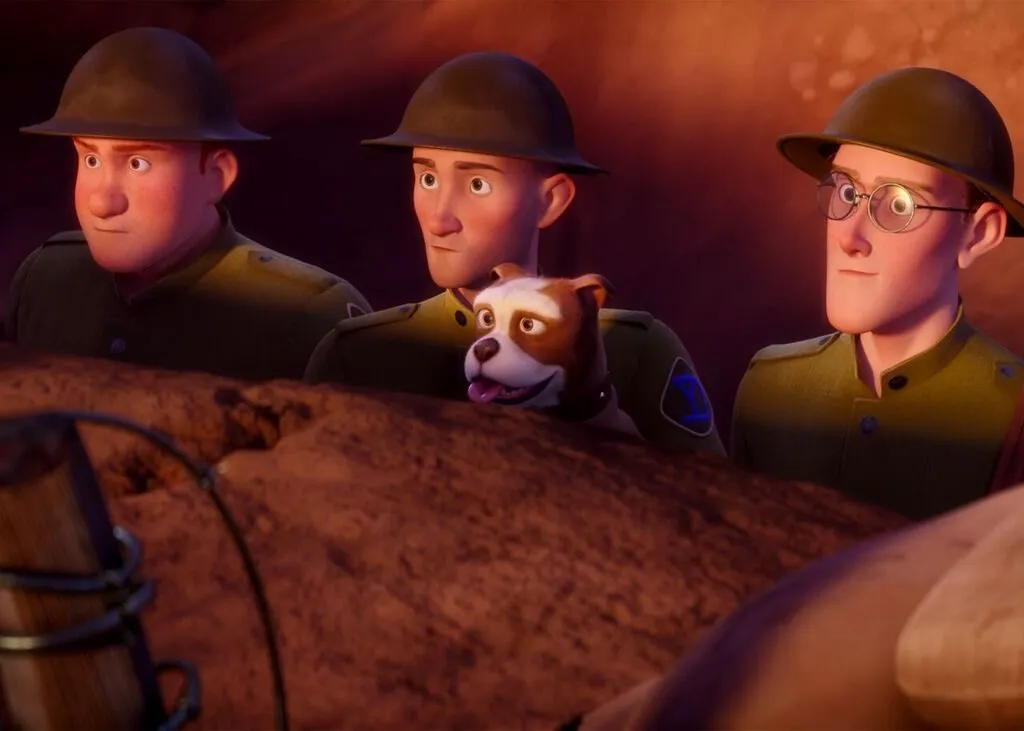For many, the name Sergeant Stubby might conjure images of an animated film, but behind the heartwarming cinematic tale lies an extraordinary true story of canine bravery and unwavering loyalty during one of humanity’s darkest conflicts. “Sgt. Stubby: An American Hero,” released in 2018, brought this incredible saga to a new generation, prompting many to ask: Is the stubby dog movie a true story? The answer is a resounding yes, and the reality of Stubby’s life is arguably even more remarkable than what could be captured on screen.
Born an unassuming stray in the bustling streets of New Haven, Connecticut, in the early 20th century, Stubby was a dog of uncertain lineage, often described as a Bull Terrier or Boston Terrier mix. His compact, barrel-shaped physique belied an immense spirit that would soon lead him from scrounging for scraps to becoming the most decorated dog in American military history. His journey began in 1917, when he found himself wandering through the Yale University grounds, where soldiers of the 102nd Infantry Regiment were undergoing training.
The Humble Beginnings of a War Hero
Among the men, a 25-year-old private named Robert Conroy formed an immediate bond with the friendly stray. Conroy adopted the dog, affectionately naming him “Stubby” due to his short stature and tail. Though the U.S. military had no official “military working dog” program at the time, Stubby’s natural charm and intelligence quickly won over the entire regiment. The soldiers, delighted by his presence, taught him to “salute” by raising his paw—a gesture that would prove unexpectedly pivotal.
When the time came for the regiment to deploy to France, Conroy’s devotion to Stubby was so profound that he smuggled his furry friend aboard the troop transport. Upon discovery by a commanding officer, Stubby, seemingly understanding the gravity of the situation, responded with his practiced salute. This unexpected display of discipline and charm left the officer speechless, cementing Stubby’s place as the official mascot of the Yankee division. From that moment, Stubby was no longer just a pet; he was a comrade, ready to face the perils of war alongside his human family. His story serves as a testament to the profound connection between humans and their loyal companions, much like the enduring bond found with the dogs of bedlam farm jon katz.
Stubby’s Extraordinary Service on the Front Lines
Stubby’s time overseas was marked by incredible bravery and an uncanny ability to assist the troops. His sharp hearing proved invaluable, allowing him to detect the distinct whine of incoming artillery shells before humans could, giving the soldiers precious extra seconds to take cover. His keen sense of smell was equally life-saving; he once alerted an entire company to an impending mustard gas attack, prompting them to don their masks and avoid disaster.
Beyond warnings, Stubby displayed remarkable courage in locating wounded soldiers trapped in the desolate no man’s land between trenches, guiding medics to their aid. He was a constant presence through four major offensives and 17 battles, serving for approximately 18 months on the front lines, including the intense Second Battle of Marne and the Battle of Chateau-Thierry, both in July 1918.
One of Stubby’s most celebrated exploits involved the capture of a German spy. Late one night on the Western Front, Stubby, ever vigilant, heard an unfamiliar sound outside the trenches. Stealthily approaching, he identified a German spy. The spy’s attempts to evade or deceive the tenacious dog were futile. Stubby, gripping the spy’s trousers, held him captive until American soldiers, alerted by the commotion, arrived to apprehend the intruder. For this heroic act, Stubby was awarded an Iron Cross medal, originally belonging to the captured spy. This incredible incident was even detailed in Stubby’s extensive half-page obituary in The New York Times, a testament to his widespread fame and the impact of his contributions.
A Hero’s Welcome: Post-War Life and Legacy
After the war, Stubby returned to America a national hero. He was honored with a medal for heroism from the Humane Education Society, an organization dedicated to animal protection, and met with three U.S. presidents: Woodrow Wilson, Calvin Coolidge, and Warren G. Harding. His fame continued to grow, and he became the unofficial mascot for sports teams at Georgetown University in Washington D.C., where Robert Conroy pursued a law degree. During this time, Stubby was even given the unofficial rank of Sergeant—a rank higher than that of his devoted master.
In 1926, the venerable Sergeant Stubby passed away peacefully at home, reportedly in Conroy’s arms, leaving behind an incredible legacy of courage, loyalty, and service that transcended the boundaries of species. His story remained a cherished part of history, ready to be rediscovered.
“Sgt. Stubby: An American Hero” – Bringing the True Story to the Screen
While Sergeant Stubby’s story was well-known in its time, it faded from mainstream memory until the release of the 2018 animated film, “Sgt. Stubby: An American Hero.” Featuring the voices of acclaimed actors like Helena Bonham Carter and Gérard Depardieu, the movie aimed to introduce this remarkable tale to a new generation.
Richard Lanni, the film’s director, discovered Stubby’s story while working on documentaries about the American experience in World War I. He immediately recognized Stubby as a “fantastic potential conduit to bring history alive to children,” knowing that children inherently relate to animals. Lanni emphasized that despite its American origins, the First World War was a global event, making Stubby’s narrative universally relatable.
 Promotional poster for the animated film Sgt. Stubby: An American Hero, featuring the titular dog in a military helmet alongside soldiers in a trench
Promotional poster for the animated film Sgt. Stubby: An American Hero, featuring the titular dog in a military helmet alongside soldiers in a trench
A key aspect of the film’s production was its commitment to historical accuracy. Lanni affirmed that “most of the film – I’d say 90 percent of it – is based on real events.” He highlighted numerous verifiable incidents depicted: Stubby did capture a German spy; he was taught to salute; he did venture into no-man’s land to locate the wounded; he did nurse Robert Conroy through the Spanish Flu; and he did suffer serious injuries and go temporarily AWOL before returning to camp. While certain details, such as a direct meeting with General George Patton, might be subject to artistic interpretation for narrative flow, their presence in the same geographical area at the same time lent a plausible foundation.
Lanni acknowledged the challenge of creating a family-friendly film about a horrific historical event. The approach, inspired by John Steinbeck’s “Once There Was a War,” focused on implying the horrors of war “off-camera,” directing the young audience’s attention to the dog’s journey and heroic actions. This sensitive portrayal allowed the film to balance entertainment with educational integrity, ensuring that children could learn about history in an age-appropriate manner.
 An animated scene from Sgt. Stubby: An American Hero, showing the dog Stubby comforting a wounded soldier in a snowy trench during World War I
An animated scene from Sgt. Stubby: An American Hero, showing the dog Stubby comforting a wounded soldier in a snowy trench during World War I
The film also serves a crucial role in preventing historical amnesia, especially regarding World War I. As Lanni noted, “We do need to find ways to help prevent history from being lost, particularly as new generations come and go.” Audience feedback indicated that the film successfully sparked children’s interest in learning more about the Great War, demonstrating Stubby’s “little way” of keeping history alive.
Conclusion
The story of Sergeant Stubby is a powerful reminder that heroism comes in many forms, and loyalty can be a force as potent as any weapon. The Stubby Dog Movie True Story is a testament not only to one remarkable dog’s courage but also to the enduring bond between humans and animals, especially in times of great adversity. “Sgt. Stubby: An American Hero” beautifully captures the essence of this historical figure, inspiring audiences while honoring the memory of all who served in World War I. His legacy encourages us to remember the past and appreciate the incredible contributions of our canine companions.
Sources & Further Reading:
- The New York Times – Sergeant Stubby’s obituary
- HistoryExtra – Interview with Richard Lanni, Director of Sgt. Stubby: An American Hero
